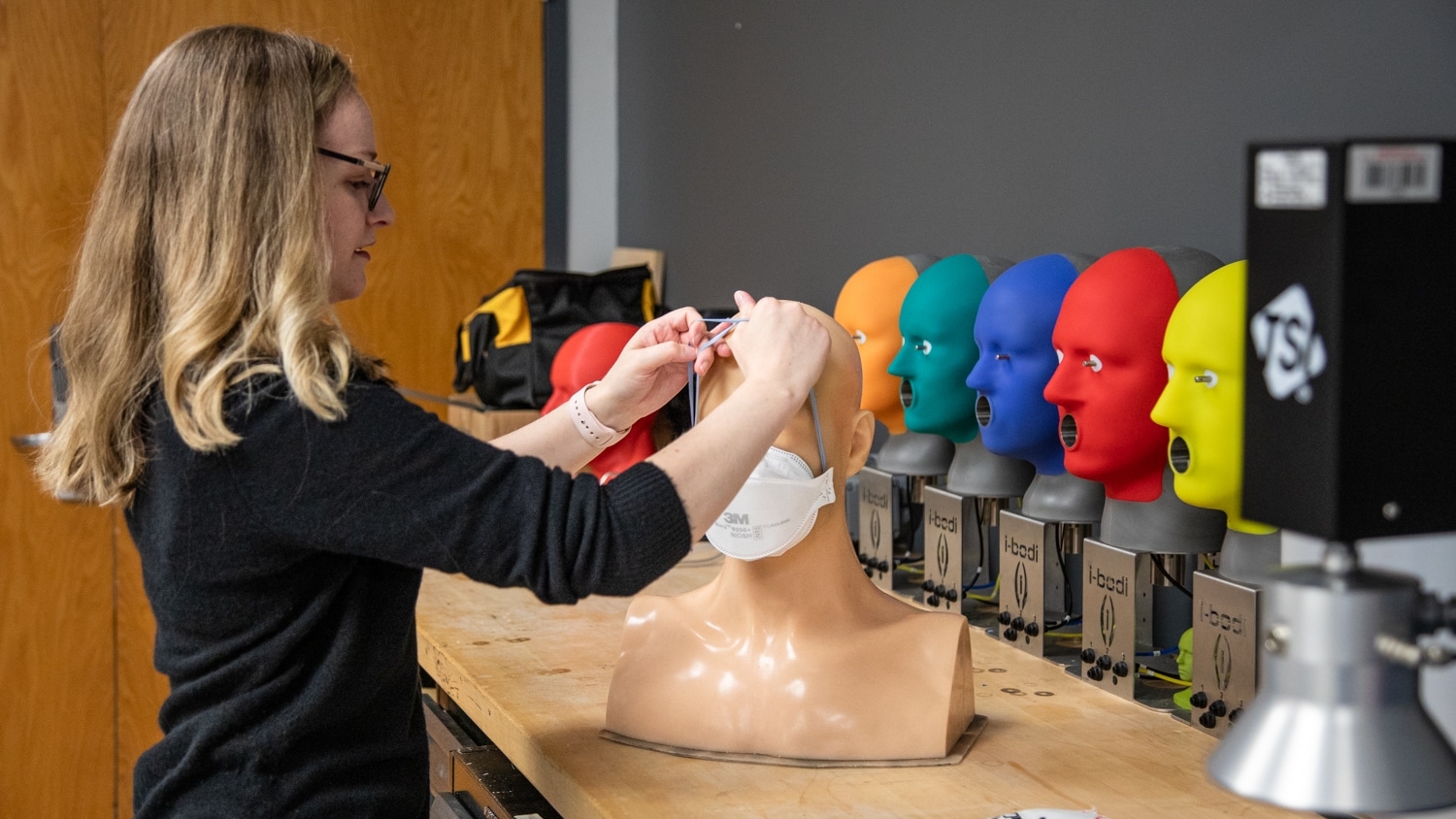By Sarah Stone
At first glance, you may not draw an instant connection between a scientist and a student-athlete. However, both will tell you in their own way that a willingness to adapt the game plan is key to success.
Cross-country runner Shannon Sefton put that principle into practice this summer during the research experience for undergraduates (REU).
“I was looking for something to do over the summer to get some experience,” she says. “I looked at a bunch of internships and nothing was really working out for the summer.”
Sefton, a textile engineering student, had to pivot her plans in order to gain experience this summer despite the pandemic. She found a new option through the REU offered by the college’s department of textile engineering, chemistry and science (TECS). This opportunity was crucial, as her student-athlete commitments usually keep her too busy during the academic year to participate in internships or research opportunities.
Sefton says she would have helped a doctoral student model how textiles are made for the military in order to devise ways to make the process more efficient. Professor Jeff Joines, who is also the department head of TECS, assigned Sefton to a project using a computer program called Simio. Simio is a computer simulation program used to model production, manufacturing systems, supply chains, health care applications and more.
“Using Simio, an engineer would ask, ‘What happens if we change the flow of materials? How much inventory do we need at each station? Where are the bottlenecks? How many people do we need?’” Dr. Joines explains. “We can build models that simulate changes to existing processes so that we can see which of these improvements might be better in the real world.”
Sefton says this research project really appealed to her as a student pursuing a concentration in information systems. However, the pandemic had other plans. Joines realized that Sefton wouldn’t be able to access the necessary information with enough time left in the summer to make progress on the research, so he transformed her REU into a one-on-one summer course about Simio. This gave Sefton the opportunity to learn about this important program from an expert; Joines has written multiple workbooks about real-world applications of Simio.

The most interesting part of the experience for Sefton was learning just how many ways modeling software could be applied to improve efficiency.
“One that I remember is modeling the DMV [Department of Motor Vehicles] and how long it takes people to go through it,” she says. “And I thought that was really cool because when you go to the DMV there is always a long line.”
The junior says this summer experience validated that she had chosen the right major for her.
“It just solidified that this was a career field that I am interested in and can see myself pursuing,” she says.
This post was originally published in Wilson College of Textiles News.



